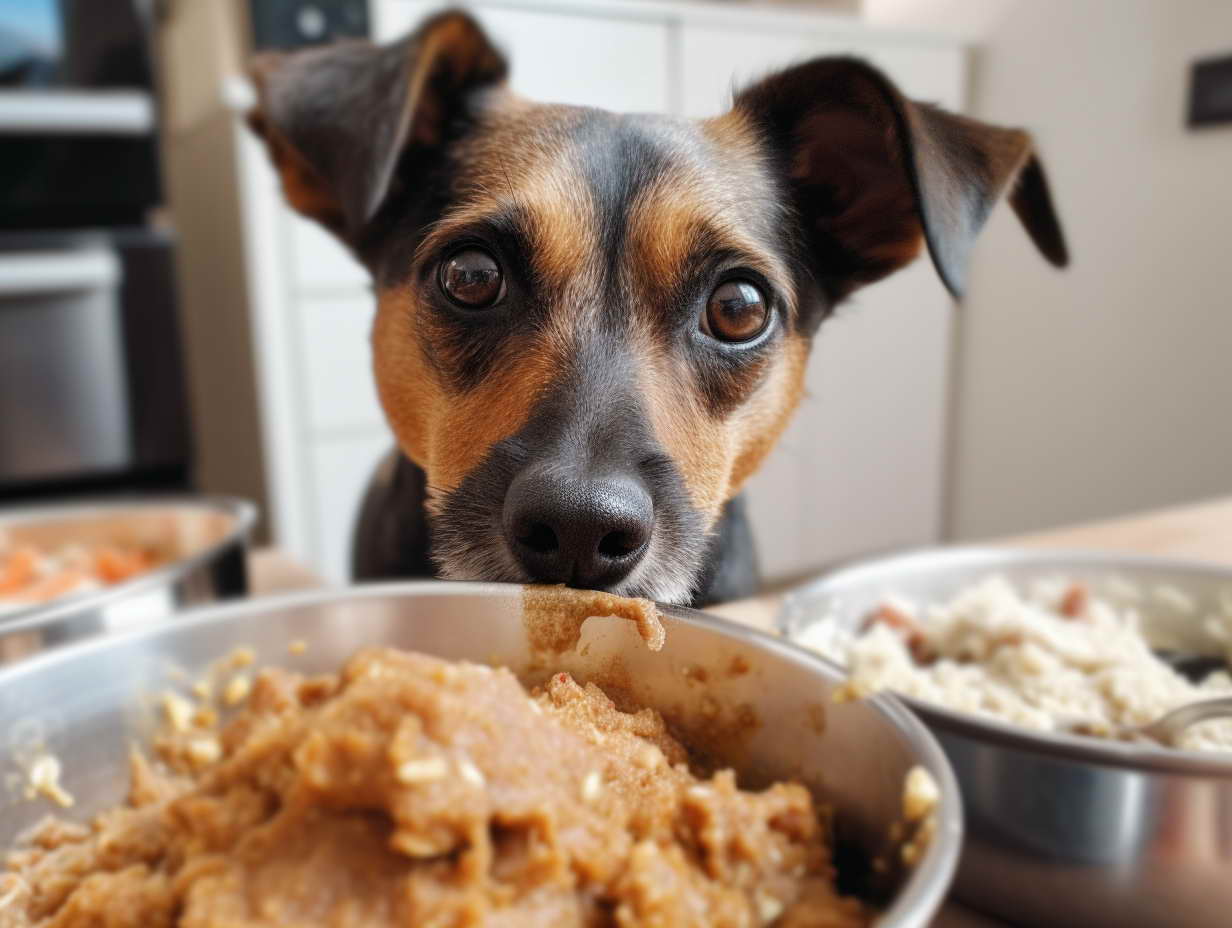Is It Cheaper To Make Homemade Dog Food?
Introduction
In a world where pet owners are becoming increasingly conscious of their furry companions’ well-being, the question of whether it’s cheaper to make homemade dog food is a pressing one. This comprehensive article delves deep into the topic, offering insights, advice, and answers to your burning questions about providing a wholesome diet for your beloved canine friend.
Homemade Dog Food: A Cost-Effective Choice
Control Over Ingredients
One of the most compelling reasons why homemade dog food can be a cost-effective choice is the degree of control it offers over the ingredients used. Here’s how this control can translate into savings:
Quality Ingredients at Affordable Prices
When making your dog’s food at home, you have the liberty to handpick ingredients that are both nutritious and budget-friendly. This means you can source high-quality proteins, such as chicken or lean ground beef, at prices that are often more competitive than premium commercial dog food. By avoiding fillers, artificial additives, and low-quality by-products, you can ensure that every ingredient serves a nutritional purpose.
Economical Staples
Incorporating economical staples into your dog’s homemade meals can substantially reduce costs. Ingredients like rice, oats, and legumes are not only budget-friendly but also provide essential nutrients. Purchasing these items in bulk further drives down expenses, allowing you to create cost-effective yet nutritious meals for your furry friend.
Avoiding Expensive Fillers
Many commercial dog foods are laden with fillers, which contribute to a lower cost per bag but offer minimal nutritional value. By preparing homemade dog food, you can steer clear of these costly fillers and focus on ingredients that benefit your dog’s health directly.
Buying in Bulk: A Money-Saving Strategy
When considering the cost-effectiveness of homemade dog food, buying ingredients in bulk plays a crucial role:
Reduced Per-Meal Cost
Purchasing ingredients in larger quantities often leads to a significantly reduced per-meal cost. Dry goods like rice, oats, and canned vegetables can be stored for extended periods, allowing you to take advantage of bulk discounts without worrying about spoilage.
Long-Term Savings
While the initial investment in bulk purchases may be higher, the long-term savings are substantial. As you continue to create homemade meals for your dog, you’ll notice a considerable reduction in your monthly pet food expenses.
Minimizing Veterinary Bills through Nutrition
Providing a balanced and nutritious diet through homemade dog food can have a positive impact on your pet’s health and, in turn, your wallet:
Preventative Health Measures
A well-balanced homemade diet can contribute to your dog’s overall health and well-being. This includes maintaining a healthy weight, promoting good digestion, and supporting a shiny coat and strong bones. When your dog enjoys good health, you’re less likely to incur expenses related to medical treatments and vet visits.
Addressing Dietary Sensitivities
Some dogs may have specific dietary sensitivities or allergies that require special diets. Homemade dog food allows you to tailor meals to your dog’s individual needs, potentially avoiding costly prescription diets or medical interventions.
Reducing Dental Costs
Certain homemade dog food recipes can also help maintain dental health. For instance, incorporating dental-friendly ingredients like carrots or dental chews into your dog’s diet can reduce the need for costly dental procedures in the future.
In summary, homemade dog food offers a cost-effective approach to providing your furry friend with high-quality nutrition. By controlling ingredients, buying in bulk, and focusing on your pet’s overall health, you can not only save money but also contribute to your dog’s well-being. This investment in their health and happiness can lead to fewer vet bills and a longer, more fulfilling life for your canine companion.
Factors to Consider
While making homemade dog food can be cost-effective, there are essential factors to consider:
Initial Investment
Creating a stock of various ingredients may require an initial investment. However, this cost usually balances out over time.
Nutritional Expertise
Ensure you have a clear understanding of your dog’s nutritional needs. Consult with a veterinarian or a canine nutrition expert to develop a balanced diet plan.
Time and Effort
Preparing homemade dog food requires time and effort. You’ll need to set aside time for meal planning, cooking, and storage.
Storage
Consider investing in proper storage containers to maintain the freshness of your dog’s meals and prevent spoilage.

Is It Cheaper To Make Homemade Dog Food?
Exploring the Cost Considerations
When contemplating the choice of making homemade dog food, cost considerations play a pivotal role. It’s not merely about the financial aspect; it’s also about understanding the overall investment involved in providing your furry friend with nutritious and lovingly prepared meals. Let’s delve deeper into the financial aspects of homemade dog food:
Initial Costs vs. Long-term Savings
Initial Investment
Creating a stockpile of ingredients for homemade dog food may require a noticeable upfront investment. Purchasing quality proteins, fresh vegetables, and essential supplements can initially seem costlier than buying commercial dog food. However, it’s important to view this as a long-term investment.
Cost Efficiency Over Time
While the initial investment may appear substantial, it usually pays off over time. Homemade dog food often involves bulk purchases of ingredients. As you buy in larger quantities, the cost per meal decreases. This means that while you may spend more at the outset, you’re likely to see significant savings as you continue to prepare meals at home.
Nutritional Value vs. Cost
The Nutritional Advantage
Homemade dog food gives you the power to control the quality and sources of ingredients. You can prioritize wholesome, nutritious components while avoiding fillers, artificial additives, and questionable by-products often found in commercial dog food. This nutritional advantage can contribute to your dog’s overall well-being and potentially reduce the need for expensive veterinary care.
Consultation with Experts
To ensure your homemade dog food meets your pet’s dietary needs, it’s advisable to consult with a veterinarian or a canine nutrition expert. While this consultation comes with a cost, it’s a valuable investment in your dog’s health. They can guide you in formulating a well-balanced diet and recommend necessary supplements, optimizing your long-term savings.
Time and Effort: A Valuable Investment
Preparing homemade dog food requires an investment of time and effort. You’ll need to set aside dedicated hours for meal planning, grocery shopping, cooking, and storage. It’s essential to weigh this commitment against the potential benefits, including cost savings and the satisfaction of providing a wholesome diet for your dog.
Storage Solutions
Proper Storage is Key
To maintain the freshness and safety of your homemade dog food, investing in proper storage solutions is crucial. While this adds a small expense, it’s essential to prevent spoilage and ensure that your dog receives high-quality meals consistently.
In conclusion, the cost-effectiveness of making homemade dog food hinges on several factors, including your initial investment, long-term savings, nutritional value, and the commitment of time and effort. While there may be a higher initial cost, the potential for substantial savings and the health benefits for your dog make it a compelling choice for many pet owners. Ultimately, the decision should align with your pet’s unique needs, your budget, and your dedication to providing the best possible nutrition for your beloved furry companion.
Frequently Asked Questions
Can I use leftovers from my meals to make homemade dog food?
Yes, you can use certain leftovers, but be cautious about ingredients like onions, garlic, and spices, which can be harmful to dogs. Always consult a veterinarian before introducing new foods.
What are some affordable protein sources for homemade dog food?
Affordable protein sources include chicken, turkey, lean ground beef, and eggs. These provide essential amino acids for your dog’s health.
How can I ensure my dog gets all the necessary nutrients in homemade food?
Consult a veterinarian or a canine nutrition expert to create a balanced diet plan. They can recommend supplements if needed.
Are there any cost-saving tips for homemade dog food preparation?
Buying in bulk, using seasonal ingredients, and minimizing food waste are effective cost-saving strategies.
Can homemade dog food prevent allergies and sensitivities?
Homemade dog food allows you to control ingredients, potentially reducing the risk of allergies and sensitivities. However, consult a vet if your dog has known food allergies.
What is the shelf life of homemade dog food?
The shelf life varies depending on ingredients and storage. Freeze homemade dog food for longer preservation, and follow recommended storage guidelines.
Conclusion
Making homemade dog food can be a cost-effective and rewarding choice for pet owners. By controlling ingredients, minimizing waste, and catering to your dog’s specific needs, you not only save money but also contribute to your furry friend’s health and happiness. Remember, the key to success lies in proper planning, nutritional knowledge, and a dash of love in every meal.

Leave a Reply